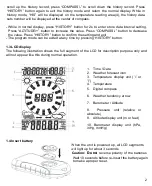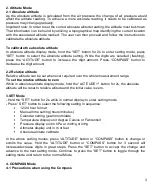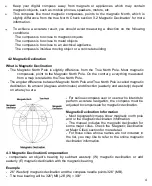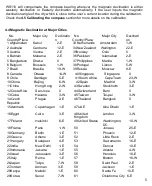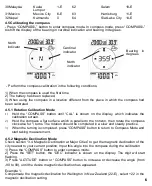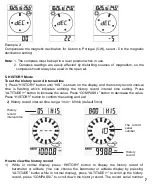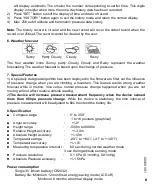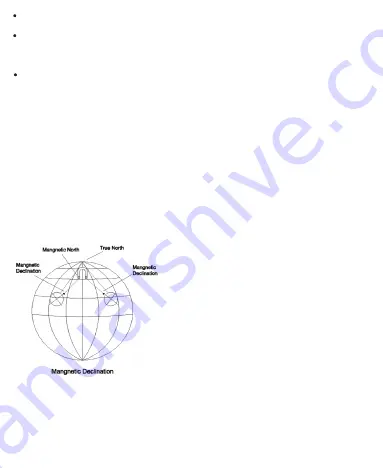
Keep your digital compass away from magnets or appliances which may contain
magnetic objects, such as: mobile phones, speakers, motors, etc.
This compass like most magnetic compasses, points to the magnetic North, which is
slightly difference from the true North. Check section ‘3.2 Magnetic Declination’ for more
information.
To achieve a accurate result, you should avoid measuring a direction on the following
conditions:
The compass is too close to magnetic objects
The compass is too close to metal objects
The compass is too close to an electrical appliance.
The compass is inside a moving object or a concrete building
4.2 Magnetic Declination
What is Magnetic Declination
- The Magnetic North Pole is slightly difference from the True North Pole. Most magnetic
compasses, point to the Magnetic North Pole. On the contrary, everything measured
from a map is related to the True North Pole.
- The angular difference between Magnetic North Pole and True North Pole is called magnetic
declination. Its amount (degrees and minutes) and direction (easterly and westerly) depend
on where you are.
- For serious compass user or users who intends to
perform accurate navigation, the compass must be
adjusted to compensate for magnetic declination.
Magnetic Declination Information
- Most topographic maps show magnetic north pole
and or the magnetic declination information.
- The manual includes the magnetic declination for
some major cities. Check the ‘Magnetic Declination
at Major Cities’ section for more detail.
- For those cities whose names are not included in
the list, you may like to refer to the online magnetic
declination information.
4.3 Magnetic Declination Compensation
- compensate an object’s bearing by subtract westerly (W) magnetic declination or add
easterly (E) magnetic declination with the magnetic bearing.
Example
- 26° Westerly magnetic declination and the compass needle points 326° (MB).
- The true bearing will be 326°(MB)-26°(W) = 300°
4


